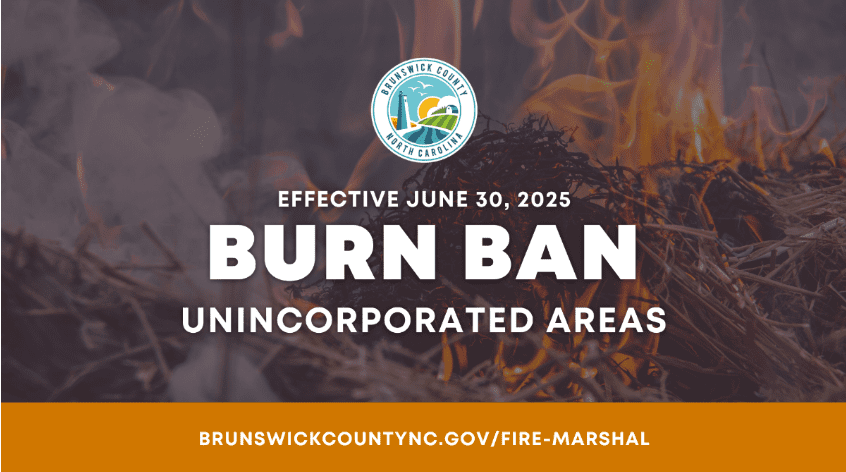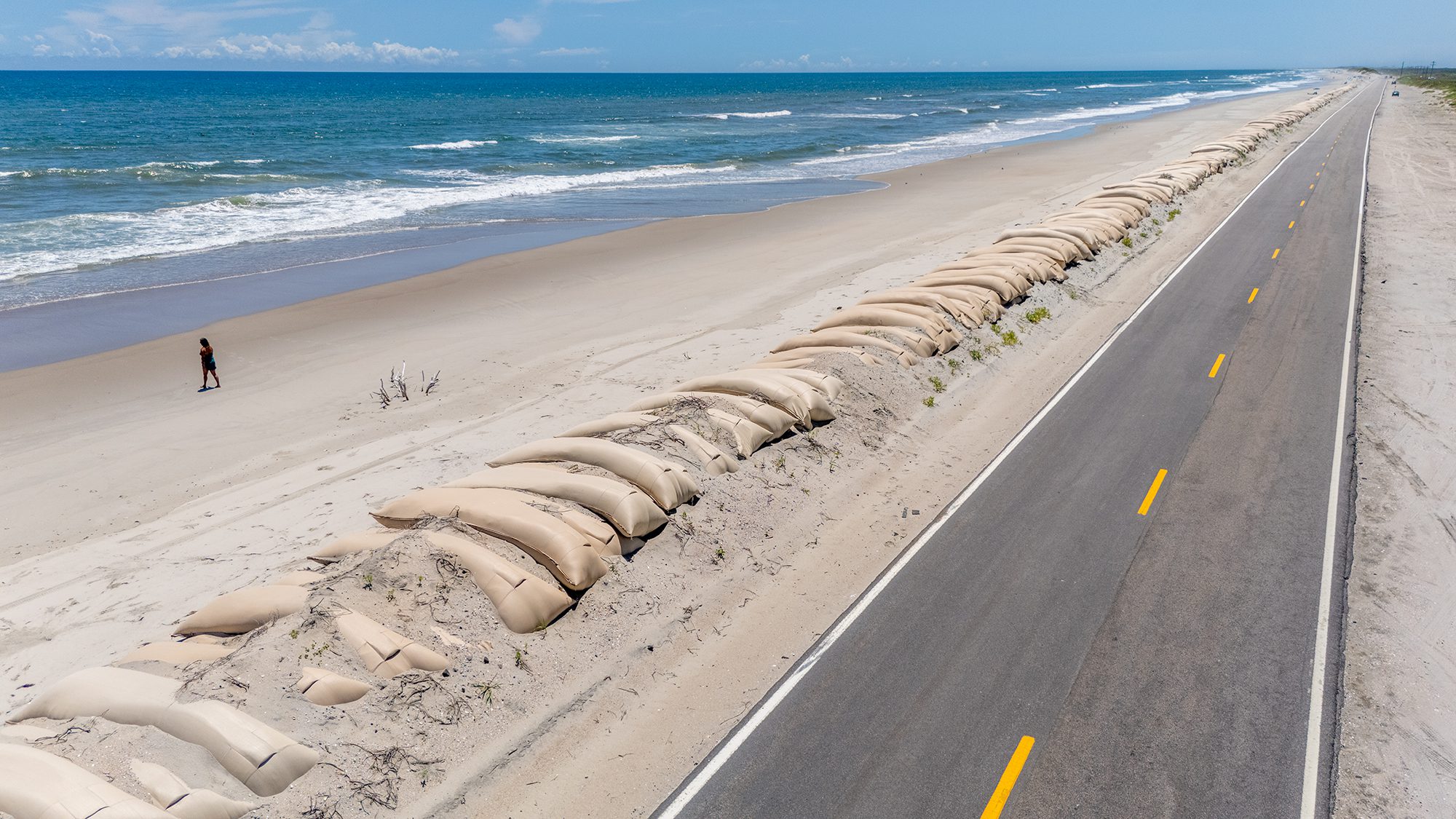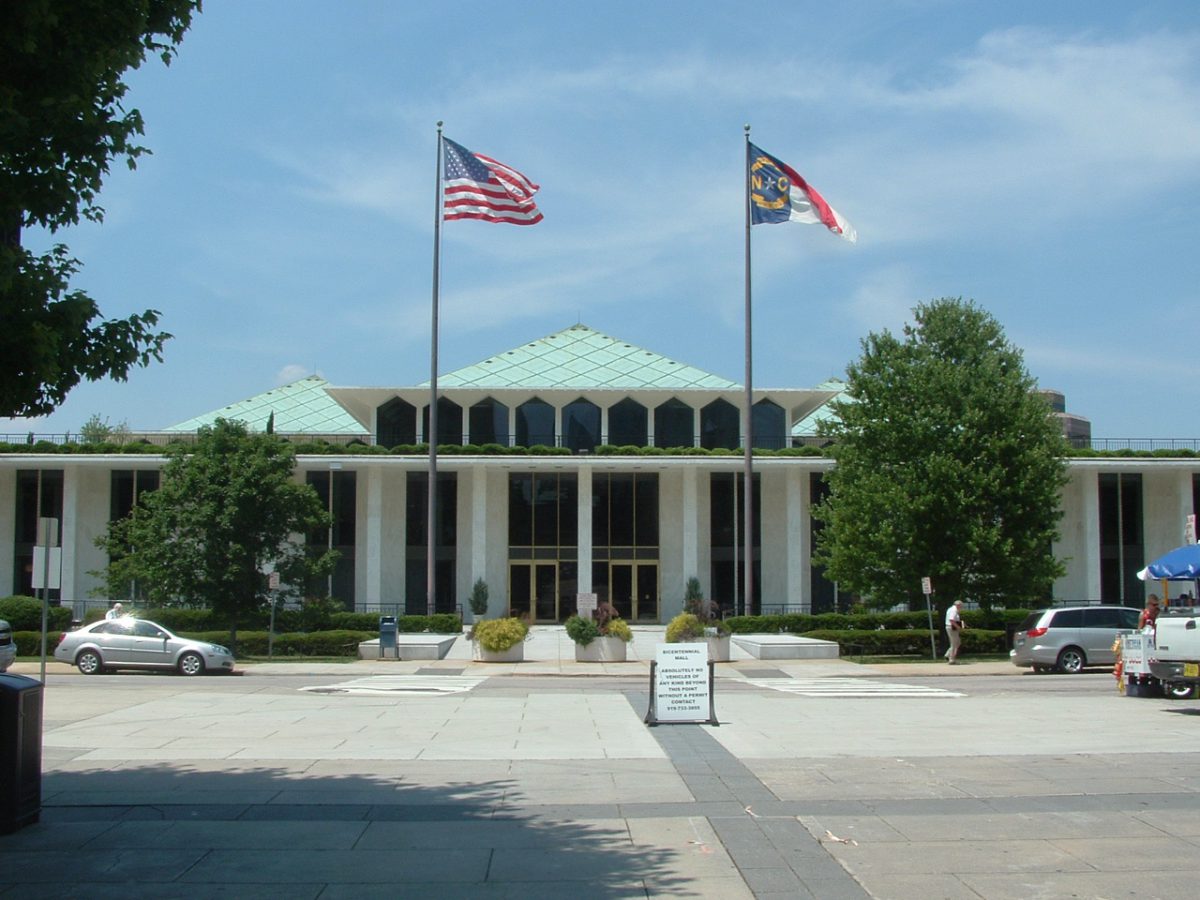
More than 70 tons of marine debris have been collected since summer from public shorelines and marshes along the central and southeast coast of the state as part of a large-scale marine debris and abandoned and derelict vessels removal project.
The North Carolina Division of Coastal Management and North Carolina Coastal Federation are working together on the project to remove large piles of pressure treated wood, plastic and polystyrene floats, and other litter from docks and waterfront structures damaged during Hurricane Florence.
Supporter Spotlight
The debris may contain harmful chemicals that can affect estuarine habitats and animals, including fish and shellfish. Large deposits of debris can pose hazards to navigation, fishers and marsh vegetation.
Nearly 74 tons of debris — the weight of about six school buses — have been collected since July from the division’s Rachel Carson, Permuda Island and Masonboro Island reserves and Hammocks Beach State Park, according to the federation. Most of the debris being collected along the coast are large pieces of debris like lumber and floats from broken up docks and piers with household debris and consumer trash only making up about 15 to 20% of the total.
So far, fisherman Joe Huie and his crew from Sneads Ferry have removed more than 35 tons of debris on Masonboro Island Reserve.
“I don’t think people could even perceive how much debris is really out there” said Huie.
“I believe that if we started debris removal around New River in Onslow County and moved our way down south into Brunswick County, by the time we finished in Brunswick and went back home over the course of a year or less, the places we had originally cleaned would be covered with debris again, and that’s without a hurricane like Florence contributing large amounts,” he explained.
Supporter Spotlight
The division’s Coastal Reserve and National Estuarine Research Reserve program is one of the many public lands that will benefit from the cleanup effort. The reserve is a network of 10 protected sites in the state established for long-term research, education and stewardship and protects more than 44,000 acres of estuarine land and water.
“This project, in concert with others being conducted simultaneously, will culminate in the largest organized public lands debris removal effort in North Carolina’s coastal history,” said Paula Gillikin, central sites manager of the Coastal Reserve Program.
The division and the federation received nearly $2 million earlier this year from the Natural Resources Conservation Service’s Emergency Watershed Protection Program to remove debris caused during Hurricane Florence and the project is just one effort to address marine debris on the state’s coast.
In July, Gov. Roy Cooper approved final legislation authorizing the North Carolina Wildlife Resources Commission to remove storm-related vessels considered abandoned or derelict. This legislation dedicated $1 million in state appropriations for the commission to remove the vessels left by hurricanes Florence and Matthew.
The division, the commission and the federation have chosen which abandoned vessels will be removed and specialized contractors are expected to begin that work in November.
The federation is receiving $121,090 from the National Oceanic and Atmospheric Administration’s marine debris program and $645,557 from National Fish and Wildlife Foundation’s emergency response marine debris program to remove dozens more vessels abandoned in the northeast coastal region.
The first large-scale cleanup project was launched in 2019 using state and NOAA funding. The project resulted in more than 315 tons of debris and several vessels removed from coastal waters.
While hired crews work to remove large scale debris, the federation and the Division of Coastal Management are encouraging the public to help keep the coast clean.
Visitors of coastal reserves and other public lands that collect trash when it’s safe to do so and disposing of it properly can share their finds by tagging “@debrisfreenc” on social media.
“I thank citizens in advance for helping collect marine debris at the Reserves and other public lands,” said Rebecca Ellin, Coastal Reserve program manager. “Through collaborative efforts such as these, we can reduce marine debris in coastal NC to protect habitats and enhance the safety and enjoyment of our coastal environment.”
Ted Wilgis, regional project lead for the federation, urged residents to help reduce property damage and the amount of debris entering coastal waters by following tips such as ensuring trash and recycling cans are empty and secure prior to storms. More ways to prepare for storms can be found at the NOAA program’s “Storm Preparedness and Marine Debris” tip sheet.
There are still hundreds of damaged waterfront structures along the coast that can contribute to the debris problem.
“We encourage owners of these damaged structures to try to secure them as best as possible until they can be removed or repaired,” he said.







